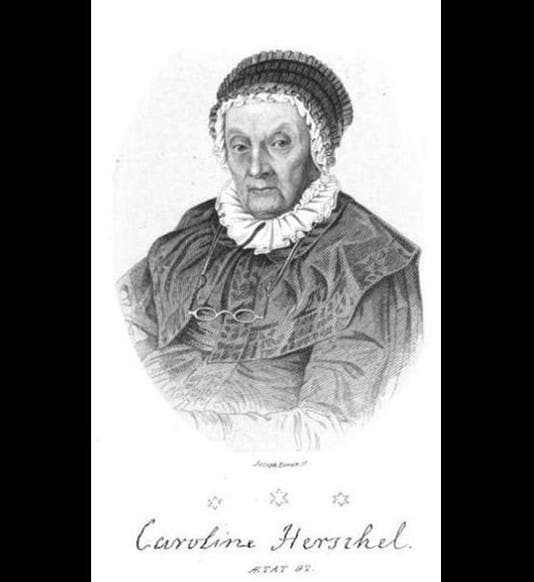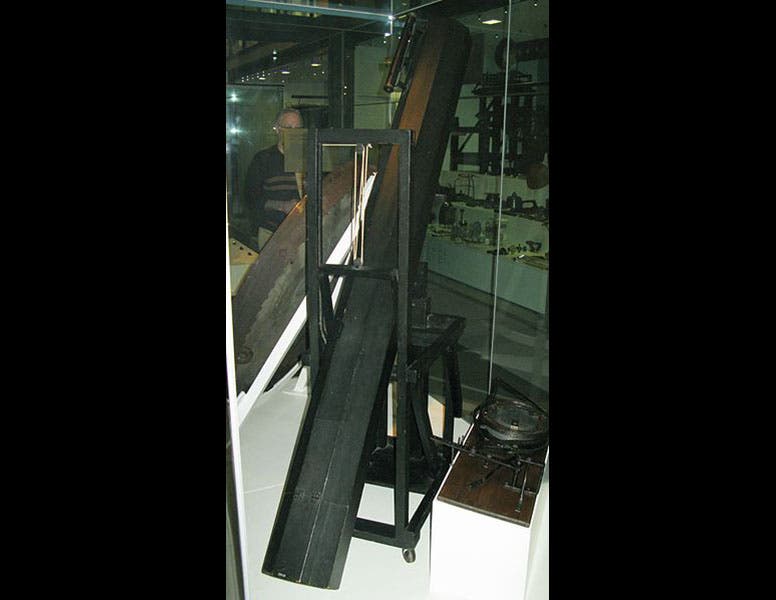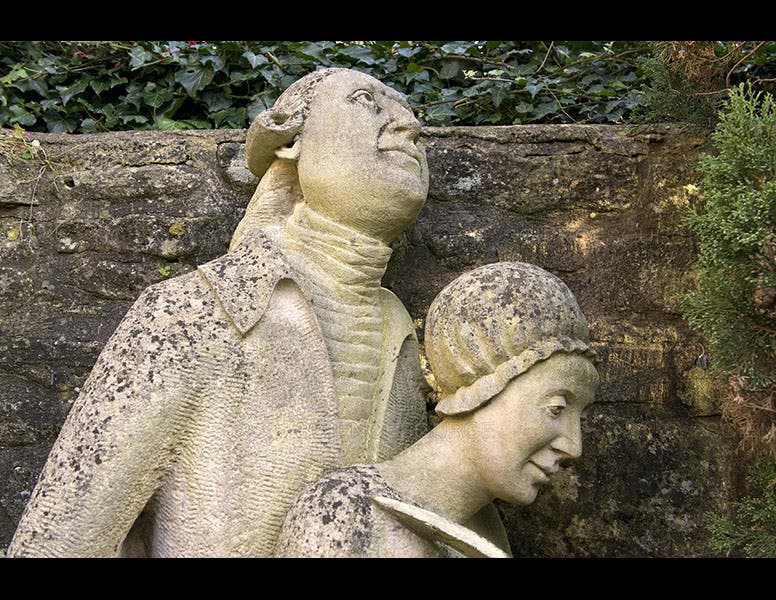Scientist of the Day - Caroline Herschel
Caroline Herschel, a German-born English astronomer, was born Mar. 16, 1750. She was the younger sister of William Herschel, a musician who moved from Hannover to England in 1766, and when he invited her to join his musical ensemble in 1772 as a singer, she accepted. Unfortunately for Caroline’s singing career, William got distracted by a book on telescope-building about the time she arrived, and he spent every waking moment, when he was not writing music and rehearsing the choir at the Octagon Chapel in Bath, learning how to grind metallic mirrors for telescopes, and Caroline was more or less left to fend for herself (although she did get to sing one of the leads for a performance of Handel’s Messiah in 1778). Fortunately for William, and perhaps for Caroline, his optical exercises paid off, in that he managed to construct the finest reflecting telescope in the world by 1779, and used it to discover the 7th planet, Uranus, in 1781. He was awarded a pension from the King (he had named his new planet George), gave up his musical career, and moved to an estate near Windsor, where he built bigger and better telescopes and used them to probe deeper and deeper into space. Caroline became his indispensable assistant. On a typical night, William would be outside, riding high on the telescope, making observations, and he would communicate with Caroline, sitting inside by the window, using an elaborate string system, which would indicate where he was looking. Caroline sat at a desk with a copy of John Flamsteed's star atlas and a manuscript atlas of her own, plotting the new positions as William determined them. She also did all the complicated calculations that are necessary to turn observations into celestial positions. Eventually Caroline moved on to projects of her own, discovering eight new comets and several nebulae. Perhaps her most significant contribution was to compile an index to the observations of John Flamsteed, in the process discovering over 500 stars that Flamsteed had observed, but which never made it into his star catalogue and star atlas. We have this Catalogue of Stars...with an Index (1798) in the History of Science Collection.
Although Caroline was the first professional woman astronomer ever (she was granted a salary by the King) and acquired a great reputation in England, especially for her comet discoveries, Caroline lived a life, by her own reckoning, that was filled with disappointment. She was disfigured with smallpox at a young age, and her father bluntly told her that she would never be able to marry. When her father died, her mother did her best to turn Caroline into a household drudge, a fate she was able to escape only when William invited her to England. She liked the astronomical work, and ran the household quite ably so William could concentrate on astronomical matters, but William did not treat her much better than her mother, assigning her tasks without ever asking if such work was agreeable. The worst blow came when William got married in 1788, and she lost her place as the woman in William’s life. William built her a cottage of her own, next to the main house in Slough, near Windsor, where she lived for the next 9 years, but because of some unknown slight or remark, in a huff she moved out, and she lived in various lodgings nearby for the rest of her time in England. That was clearly a mistake, but she was very stubborn and refused to go back to the way things were.
When William died in 1822, Caroline moved back to Hannover to be with her youngest brother, where she lived another 25 years, complaining often about the infirmities of old age. She received many honors late in life, receiving a medal from the Royal Astronomical Society in 1827 and then becoming the first woman to be granted a honorary fellowship in the RAS in 1835. And she is certainly honored today as one of the great figures in the history of women in science. It is sad that she did not take more pleasure in her considerable achievements.
Nearly all of the portraits of Caroline show her in her later years (first image), although some artists and sculptors have attempted to reconstruct a younger version, as in this statuary in Bath (third image). The telescope that William made for Caroline, and with which she discovered her comets, survives and is on display (second image).
Dr. William B. Ashworth, Jr., Consultant for the History of Science, Linda Hall Library and Associate Professor, Department of History, University of Missouri-Kansas City. Comments or corrections are welcome; please direct to ashworthw@umkc.edu.









